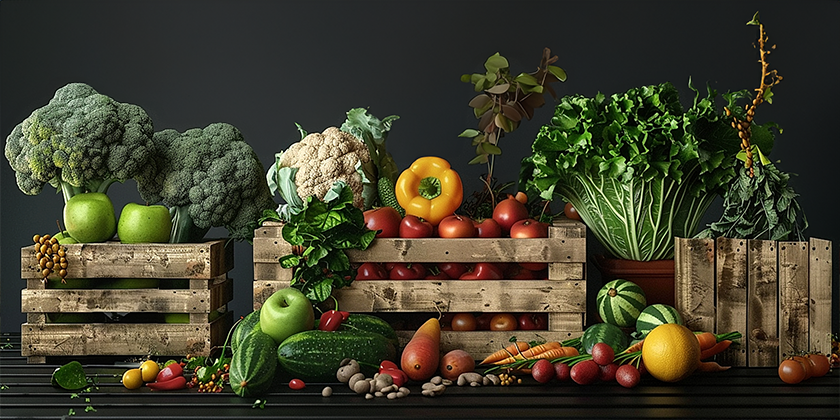Understanding the complex facets of pricing is paramount in the world of produce retail.
It is a nuanced sector where profitability can fluctuate with the season, the weather, even the hour.
Inconsistent pricing models can engender confusion and erode customer trust.
This leads us to the importance of maintaining transparency in pricing.
After all, transparency often engenders trust and loyalty.
In the following sections, we will delve into strategies that can be implemented to achieve this level of openness and honesty with customers in the pricing process.
Contents
Strategies For Transparent Pricing In Produce Retail
1. Clear labeling with prices on each product
For any retail business, in the current market scenario, one of the most effective strategies to maintain customer trust and loyalty is providing clear, transparent pricing.
Transparency in pricing more specifically means that the customer knows exactly what they are paying for, without any hidden costs or fees.
In the context of a produce retail business, it translates to the clear labelling of prices on each product.
Not only does it promote a sense of honesty and integrity in your business, but it also empowers the customer to make informed purchase decisions.
Including the price on the product label itself greatly enhances the customers’ shopping experience by eliminating the stress of unknown costs.
This method eliminates any doubts of chargeable add-ons or hidden costs, which can often lead to cart abandonment in the case of online shopping or dissatisfaction in the case of physical stores.
Price labelling on each product is the first and foremost level of pricing transparency and forms the base for other transparency enhancing strategies in retail.
Customers no longer have to search for or ask about the cost of the product; it’s right there for them to see.
This approach enables customers to compare the price with the perceived value of the product, further guiding their purchase decision.
Moreover, clear price labels avoid any possibility of price discrepancies at the point of sale, ensuring a smooth checkout process for the customer.
Such an up-front approach towards pricing also encourages consumers to trust your business.
Clearly visible prices on product labels create an open, honest image of your retail business, and this transparency can enhance your brand’s reputation.
Doing so also eliminates the possibility of any embarrassment or discomfort that arises from a customer choosing an item without knowing the price, only to discover they can’t afford it at checkout.
In essence, labeling the price directly on the product is a simple yet powerful tool for enhancing transparency in pricing.
It assists retailers in establishing credibility and trust with their customers, a critical factor for long-term success in the retail industry.
Thus, clear labeling with prices on each product surely ranks high in the list of strategies for transparent pricing in produce retail.
2. Display Pricing Per Unit for Comparison
One of the crucial strategies for transparent pricing in produce retail is displaying pricing per unit for comparison.
This approach goes beyond just showcasing the total cost of a product.
It involves breaking down the price so that customers can understand precisely what they’re paying for each unit of a product.
For instance, if you’re selling apples, don’t just label the packaged bundle with a total price.
Explicitly indicate how much each apple in that package costs.
This per-unit pricing not only promotes transparency but also allows shoppers to compare prices across different brands and formats.
Customers can directly compare the value they’re getting from a small package of a product to a larger one, rather than trying to calculate this for themselves.
Per-unit pricing not only promotes transparency but also allows shoppers to compare prices across different brands and formats.
It can also highlight the benefits of buying in bulk if the per-unit price decreases with larger quantities.
It’s important to clearly label these per-unit prices, using forms of measurement that make sense to the consumer.
For example, use per kilogram prices for fruits and vegetables, or per liter prices for beverages.
To further support transparency in your pricing strategy, ensure that these figures are prominent and easy to understand.
Highlight the per-unit cost on your packaging and in-store signage, and include them in your online listings if applicable.
Additionally, it’s beneficial to align your unit pricing with that of competitor products to make comparison even more accessible for consumers.
This practice keeps you competitive in the market and gives shoppers a fair basis for comparison.
Transparent pricing per unit ultimately promotes trust in your brand, as customers can clearly see what they’re paying for and compare that to other options in the market.
Through it, you not only display fair pricing, but you also provide a value proposition to your customers which can boost your sales and brand loyalty.
3. Regular updates on any price changes
In business, especially in retail, transparency is an essential factor that can improve trust between the business and its customers.
For produce retailers, one effective strategy that ensures transparency is regularly updating customers on any price changes.
Retail pricing can fluctuate due to a variety of factors, including seasonal changes, supply and demand, transportation costs, and agricultural issues.
These factors can lead to unpredictable price changes for produce, which can sometimes catch consumers off guard causing confusion and dissatisfaction.
Therefore, communicating price changes effectively to consumers is crucial in maintaining trust and solidifying a perception of transparency.
Broadcasting price updates proves to the customer that the company has nothing to hide and is ready to explain every cost involved.
Technology plays an essential role in implementing this strategy, where retailers can leverage technology platforms such as websites, mobile applications, or even social media to deliver price update information to their customers.
Customers appreciate it as they can then plan their purchases accordingly, knowing what to expect when they arrive at the store or shop online.
Significantly, updates on price changes should not just convey the fact that prices have changed but also the reason behind the increase or decrease.
Offering an explanation shows that the company is not merely interested in making profits, but it also cares about its customers and wants them to understand why they need to pay more or less for a product.
Regular communication also helps to cultivate relationships with customers, which can in turn promote customer loyalty and repeat business.
Updating prices on a regular basis might sound like a hassle but in the end, it enhances customer experience and trust.
Therefore, offering regular updates on pricing changes is not just a pricing strategy; it is also a customer service and public relations strategy that contributes to business growth.
All in all, it is important for produce retailers to understand that transparent pricing is not about merely showing the prices, but about communicating openly and honestly about them.
4. Publish Ingredient Sourcing and Cost Factors
Transparent pricing in the produce retail industry doesn’t end with just displaying product prices and their related data.
It should also involve disclosing vital price determination information such as ingredient sourcing and cost factors.
Ingredient sourcing refers to the process of acquiring the raw materials or ingredients used to make the products.
The origin of ingredients and raw materials has significant influence on the cost of produce, thus impacting the prices that customers have to pay.
Customers are more aware and concerned about product origin and quality now than before.
They would appreciate a retailer that’s transparent about where they source their ingredients and why they choose those sources.
Moreover, this transparency about ingredient sourcing can also help build customer trust and loyalty.
About cost factors, these would include the costs involved in production, transportation, storage, labor costs, and other overheads.
The various cost factors involved in bringing a product from the farm or factory to the retail shelf significantly influence the selling price.
Retailers should therefore disclose these cost factors to their customers or at least explain how these factors impact the product prices.
Disclosing cost factors further empowers customers by helping them understand and justify the prices of the products they buy.
It’s worth noting that disclosing ingredient sourcing and cost factors can also benefit the retailers themselves.
For example, it can improve their image and reputation among customers, promote a sense of corporate social responsibility, and help differentiate themselves from competitors.
In summary, publishing ingredient sourcing and cost factors is a crucial aspect of price transparency in the produce retail sector.
It involves being open about where the ingredients come from, why the retailer chooses those sources, and explaining how various cost factors influence the product prices.
5. Leverage Technology for Real-Time Price Updates
The advent of technology has brought about numerous advancements in the retail sector.
One of these is the potential for providing real-time price updates to customers.
This approach is highly beneficial when it comes to ensuring transparency in pricing.
It helps to eliminate any doubts or misunderstandings that a customer may harbor concerning the pricing of a particular product.
Employing technology to provide real-time price updates fosters trust and loyalty in customers, thereby enhancing their retail experience.
This process begins with the integration of technology within the retailer’s system.
Several software solutions and applications are currently available on the market that makes this task convenient and relatively effortless.
These tools not only offer real-time price updates but can also track trends in market pricing, making them invaluable in strategic planning.
In addition, these technological solutions can help retailers to identify and rectify any pricing discrepancies that may exist within their system.
It is essential that these tools are thoroughly evaluated and tailored to the specific need of the retailer for them to effectively serve their purpose.
This ensures the right tool is selected, thus maximising on the benefits that it can offer.
Another key aspect to consider while integrating these technology solutions is the accessibility to customers.
In order to enhance customer experience and boost their confidence in the retailer, these updates need to be easily accessible.
This can be facilitated by integrating these updates within the retailer’s website or mobile application, ensuring that they are readily accessible at any given time.
Moreover, educating customers on how to utilise these updates can also prove beneficial.
Conducting online tutorials or providing instructions on how to obtain these updates within the store, may enhance the transparency of pricing, thereby boosting customer satisfaction.
By leveraging technology for real-time pricing updates, retailers can build trust with their customers, maintain their loyalty and enhance the overall shopping experience.
The Bottom Line
Transparency in pricing, regular updates of any changes, and the utilization of technology to maintain real-time accuracy not only help build consumer trust but also bolster the credibility of business operations.
Factoring in the sourcing and cost of ingredients can significantly enhance this transparency, asserting the brand’s commitment towards its customers.
As such, this commitment can potentially lead to an increase in customer loyalty and, in turn, contribute positively towards the brand’s sustainable growth and success in the marketplace.
Ultimately, open and accurate pricing, paired with ongoing innovation in technology, drive customer engagement and satisfaction.




